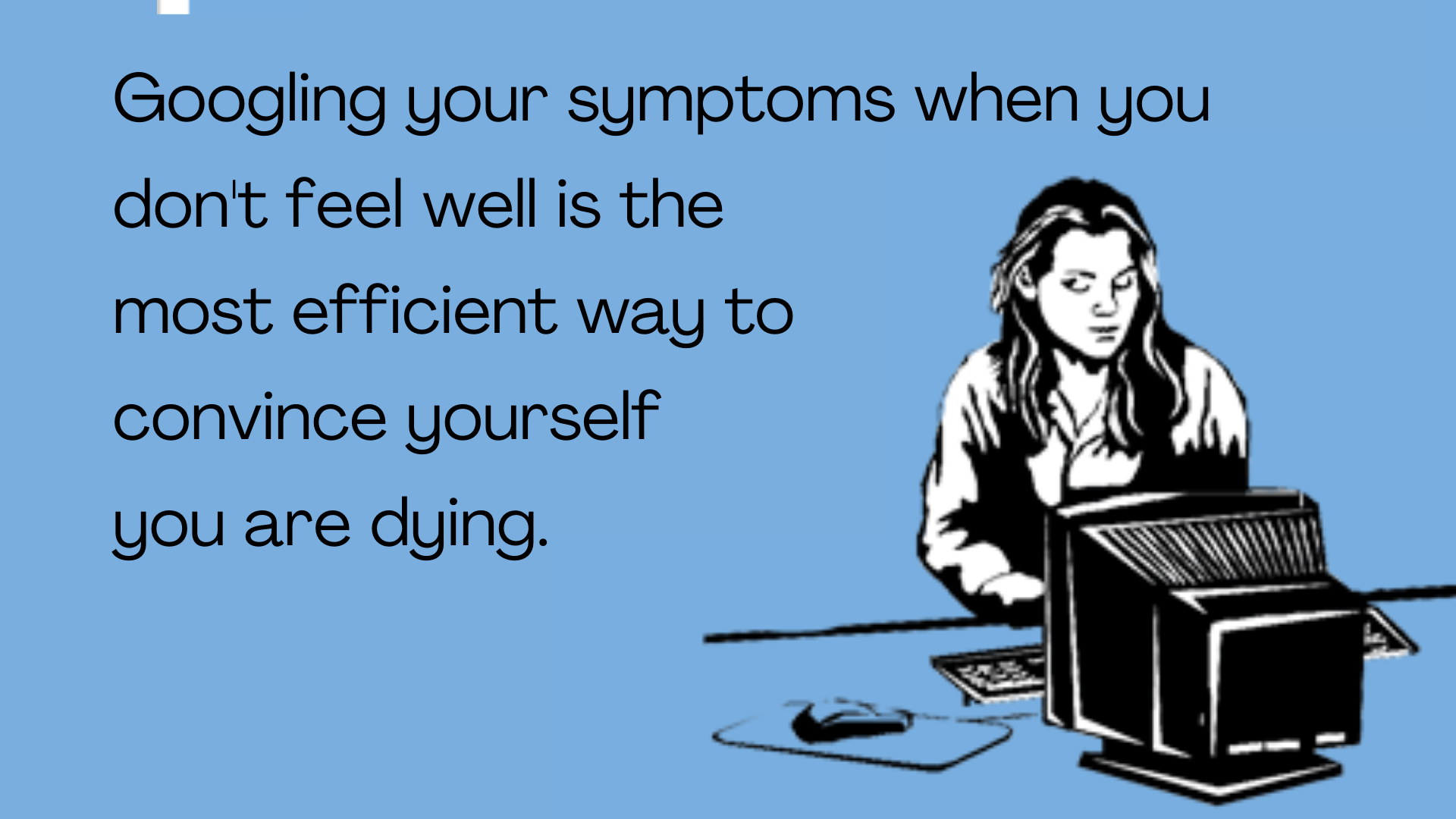Dealing with panic disorder can be very challenging and often times terrifying. Contrary to an isolated panic attack, which is scary and traumatizing on its own, the condition of panic disorder implies that a person is living with constant fear of recurrent panic attacks, and a plethora of unpleasant, distressing physical and mental sensations. This article provides a safe-haven for anyone who is suffering from panic disorder, charting an optimistic and reassuring path forward.

It is difficult to imagine a life outside of our own experience. And that is why true empathy is rare, and why personal afflictions feel singular and unique. Sadly enough, the individual who is suffering from panic disorder finds her problem to be overwhelmingly subjective. However, despite the perceived gravity of panic, this is one of the most easily, and reliably treated anxiety disorders.
Sonder
Noun – the realization that each random passerby is living a life as vivid and complex as your own—populated with their own ambitions, friends, routines, worries and inherited craziness—an epic story that continues invisibly around you like an anthill sprawling deep underground, with elaborate passageways to thousands of other lives that you’ll never know existed, in which you might appear only once, as an extra sipping coffee in the background, as a blur of traffic passing on the highway, as a lighted window at dusk.
The idea that this condition is shared by many millions of people worldwide should provide quite the reassurance. Every day, tens of thousands of individuals go to the emergency room, convinced that they are dying, or at the very least that they are affected by a serious illness.
Panic disorder affects 2.7% of the American adult population, and women are twice as likely to experience ongoing panic symptoms as opposed to men. Luckily enough, the condition is remarkably simple to treat when addressed properly.
But before we discuss treatment options for panic disorder, it is prudent to familiarize ourselves with the relevant literature, especially in defining this affliction.
What is a panic attack?
The Diagnostic and Statistical Manual for mental disorders, in its fifth edition’s criteria for diagnosing a panic attack, describes panic attacks as an abrupt surge of intense fear or intense discomfort that reaches a peak within minutes, and during which time four or more of the following symptoms occur:
- Palpitations, pounding heart, or accelerated heart rate
- Sweating
- Trembling or shaking
- Sensations of shortness of breath or smothering
- Feeling of choking
- Chest pain or discomfort
- Nausea or abdominal distress
- Feeling dizzy, unsteady, lightheaded, or faint
- Derealization (feelings of unreality) or depersonalization (being detached from oneself)
- Fear of losing control or “going crazy”
- Fear of dying
- Paresthesias (numbness or tingling sensation)
- Chills or heat sensations
Do note that other sensations which are not on this list may or may not occur during a panic attack. The time frame is also different for most people – while some experience panic attacks that build gradually, others experience them abruptly; while some experience short panic attacks of few minutes, others have a lingering sense of dread and anxiety that takes longer to settle.
What causes a panic attack?
A panic attack happens as a result of misinterpreting sudden fight or flight sensations. These can happen for specific reasons such as drug misuse, genetics, long term stress, family or relationship problems, a chemical imbalance, illness, work related stress etc.
They can also happen without any obvious reason at all.

A panic attack is a fearful reaction to otherwise harmless physical or mental sensations. These sensations could very well be some of the worst imaginable subjective experiences, but they cannot do you any actual harm. Interestingly enough, they are not the main cause behind the panic attack itself.
Instead, at the base of every panic attack is a mistake – a false conviction that the scary physical and mental sensations might pose a danger to our life and health. It is because of this mistake that we misinterpret the sensations as something life-threatening.
At that moment, we panic, which releases signals to our brain that we are in danger (when in fact we are perfectly safe). Misinterpreting these signals for actual reality, our brain demands for more adrenaline to be released throughout our body, and several physical processes are well underway. Our heart beats faster, sometimes irregular; our mind is in a very aroused state looking for danger; our breathing becomes shallower; we feel breathless; part of our extremities and sometimes even part of our face tingle and feel numb, etc.
Some or all of these sensations are the exact same ones that occur with situations when we are in danger. It is all thanks to evolution which made sure to activate the fight or flight response when our ancestors were confronted with real or perceived threats. So, if a tiger was chasing us, the fight or flight response would be activated without fail.
However, when these sensations occur without any obvious reason, we assume wrongly that something is wrong with our health. Because of this, we mistakenly panic, thus releasing even more adrenaline and increasing the fight or flight response.
Without fail, and within a matter of minutes, these sensations always subside. Nevertheless, the afflicted individual may have a very strong reason to believe that something is wrong.
What is panic disorder?
When a panic attack is dealt with properly, i.e. the reason behind the experience is properly explained, and the person is reassured that everything is ok, the likelihood of future attacks is rather low.
That is why it is very important for people to be checked by a doctor, just in case, and be given the green light that everything is in perfect order. Accepting that, it is easier to move on and work proactively on lowering stressors in everyday life.
However, if the experience of a panic attack is traumatizing enough, and neither reassurance nor explanation of the nature of panic attacks are provided, the person may go on to develop panic disorder.
The DMS-5 characterizes panic disorder as having one panic attack that has been followed by 1 month or more, by 1 or both of the following:
- Persistent concern about additional attacks or their consequences
- Significant maladaptive change in behavior related to the attacks
Panic disorder manifests itself with recurrent panic attacks of different intensity and underlying anticipatory anxiety between attacks and throughout everyday life.
Understandably, dealing with panic disorder can affect one’s life, by significantly limiting a person in day to day situations. The affected individual restricts, or in many cases endures with marked distress, a plethora of routine activities such as commute, housework, social occasions, work, shopping, etc.
Myths about panic disorder
Panic attacks are dangerous
The most common myth with people suffering from panic attacks and dealing with panic disorder is that panic is dangerous. The reality, though, is that panic attacks are not dangerous. If a person is otherwise healthy then there is no concern regarding panic attacks, irrespective of how horrifying they feel.
The relevant literature confirms this, reassuring anyone who suffers from this condition.
Repeated panic attacks put a toll on your health
While anxiety and stress are not good for anyone, the truth is that it takes quite a lot of time for these conditions to jeopardize your health. If you are otherwise young, healthy, and take good care of your diet, then panic attacks are not going to make a notable difference regarding your health – at least not for a number of years.
Just think about how many different things people endure – we run marathons, lift incredibly heavy weights, eat and drink ingredients that are proven to be unhealthy… yet, our organs are functioning properly, our blood work is normal.
Even people who have serious health diagnoses are managing their conditions with little to no intervention, mostly through pills and few lifestyle changes.
Panic disorder treatments
When dealing with panic disorder, there are several treatment venues to consider. The best way to begin is to get yourself checked by a doctor, to rule out any possible health conditions that might mimic, or otherwise cause panic (such as thyroid problems, etc.)
After you are told by a doctor that everything is ok, it is important to stop searching for other symptoms online, as this can greatly exacerbate your fear and misinterpretation of what is actually happening.

If otherwise healthy, you must accept that you are dealing with panic disorder. It is harmless (though scary), but nothing else is going on.
Then, it is wise to approach treatment holistically, and with regards to circumstances.
Considering medication
If the panic attacks and the underlying anxiety are severe enough to limit your everyday life to a point where you cannot work or perform home and family obligations, then it is wise to consider medication. Contrary to decades past, medication today is very effective, thoroughly researched and almost perfectly safe.

However, if circumstances permit, you can try treating panic disorder without medication, since there are solutions that are equally if not even more so effective.
Two classes of medications are effective against panic disorder, both with a different use case:
SSRI – selective serotonin reuptake inhibitors
SSRIs were first introduced during the 80’s, and they were meant to treat depression. However, soon enough they were established to be very effective, in fact more than any other type of medicine, in treating a range of anxiety disorders, especially panic disorder.
Two SSRI drugs are very well tolerated and frequently prescribed for panic disorder – these are sertraline (Zoloft) and fluoxetine (Prozac).
A simplistic view of how SSRIs work is to imagine the neurotransmitter serotonin as a messenger between nerve cells in the brain. When serotonin delivers “messages” between cells, it influences mood, emotion, composure and relaxation. Again, this is a simplistic view, so bear with me…
When serotonin delivers the message, it gets reabsorbed by the nerve cells, which is called reuptake. SSRIs, which have reuptake inhibitors in their name, block this process, thus allowing more serotonin to be available and flow freely.
Benzodiazepines
Benzodiazepines, on the other hand, work by enhancing the action of the neurotransmitter called gamma-aminobutyric acid (GABA). In short, this neurotransmitter is responsible for slowing down the central nervous system, which alleviates anxiety.
However, while SSRIs are safe for long term use, benzodiazepines are far more addictive and therefore much more dangerous as part of treatment. The full benefits and risks of benzodiazepine use are highlighted within this article.
Cognitive behavioral therapy

CBT, which stands for cognitive behavioral therapy, is the golden standard for treating anxiety disorders, and it is especially effective against panic disorder.
You can work one-on-one with a certified therapist, or follow an online course and do the homework by yourself.
The therapy is structured in a way that walks the patient through several steps of liberation form panic. You will learn:
- What panic is, how it is completely harmless, and how the cycles of fear work
- Cognitive practices on how to deal with surges of adrenaline and panic
- Behavioral habits to implement into your daily life
- One coherent strategy to combine exercises with the broader understanding of panic
CBT is very effective in dealing with panic disorder because it tackles the root of the problem – it addresses the misinterpretations that fuel panic, and it corrects the safety behaviors and avoidance behaviors which maintain the fear of panic.
The reason why CBT is so effective in reducing the frequency and potency of panic attacks even within the first month is because it teaches the individual, both in a rational as well as experiential sense, that panic cannot cause any actual harm. As patients lose their fear of panic, it stops happening. With enough practice and understanding, the severity of the disorder is minimized, until one day the patient is completely free of panic.
CBT treatments for dealing with panic disorder usually last for about 12 weeks, with 6-12 sessions depending on necessity. If online courses are taken without any supervision, it is important to stress how vital it is to participate fully, and DO THE EXERCISES. Understanding alone is not enough to cure panic – you will need to perform the exercises, which are considered central to the CBT treatment.
Here is one study where 81 people with panic disorder were treated with CBT for 12 weeks.
These results are comparable with the parallel findings in the other efficacy studies – at one year follow-up, 89% of the patients treated with CBT were panic free, and a substantial proportion of the sample successfully discontinued benzodiazepine use.
There is a very good online self-paced course on CBT, which is ranked very high on Udemy, and it deals extensively with panic, providing a step-by-step process towards a full recovery. It is free and easily accessible online, at http://cbt4panic.org – I am forever grateful to Robin, even though we never met, and never spoken. His program is unique in a sense that it answers the most commonly asked questions, and walks you through, step by step, with simple and easy instructions.
How to deal with panic attacks

The best way to deal with panic attacks is to let them pass – to accept fully the physical and mental sensations and trust that nothing dangerous is going to happen. This will deactivate the fight or flight response, and the panic attack will dissipate sooner. Such an approach, however, requires practice.
Recognizing your fear of panic attacks while driving, going to work, waiting in line or simply being in public, is a healthy way towards freeing yourself from this affliction. The sooner you realize that you are in fact dealing with fear of fear, and not with some medical condition that requires urgency, the faster your recovery will begin. A true realization of this fact will feel like an epiphany, and your experience with panic will never be the same again.
Other methods that are often highlighted on the internet, such as deep breathing, etc. are in fact frantic attempts to escape panic – which, ironically, only exacerbate the sensations. And this is understandable – we all want to escape panic – but trying to resist or escape these sensations is what is keeping you in the same loop. The more you resist, the more the fight or flight response is being activated, and the sensations become worse.
Just accept that you are in no danger whatsoever, and let panic do its worst.
Other considerations for treating panic disorder
There are many ways to naturally reduce anxiety, and therefore minimize the symptoms or the potency of panic attacks. Some of these include mindfulness exercises such as meditation, diet that is higher in protein, omega fatty acids and whole grains as opposed to refined carbohydrates, and natural anxiolytics in the form of supplements, herbal teas, herbs and seeds…
And while magnesium glutamate, magnesium taurate, omega 3 capsules, probiotic strains such as lactobacillus rhamnosus, and the suite of B vitamins are generally effective in reducing anxiety, it is counterproductive to take them with high expectations of a miraculous recovery.
It is, however, very important to completely avoid caffeine (as it usually exacerbates anxiety), alcohol, and illegal drugs, while trying to improve the duration and quality of your sleep.

You can also consider exercise, as it exposes you to some of the frightening sensations such as breathlessness, lightheadedness, and rapid hear rate. Learning to coexist with these sensations, as you once did, is a surefire way towards recovery. However, since it is easy to ruminate on these sensations while you exercise, consider choosing a social physical activity such as group sports. Football, basketball, and other group activities are preferable to running alone, since there is plenty of distraction at the beginning, and until you learn that these sensations of physical arousal are harmless. You can also try home exercise and work out with a partner, if going outside is hard at the beginning, and the idea of working out by yourself is still outlandish.
Make sure to find time for pleasurable activities, and accept that for now, you are going to experience these unpleasant physical and mental sensations. Acceptance, for better or worse, is the most productive way towards being free of panic. CBT teaches you how to approach acceptance, and thus transform your experience with panic as if a light switch has been flipped off.
If need be, try to view medication as a helpful crutch on your way towards recovery, rather than a cure. The most effective cure, and I cannot stress this enough, is CBT, which is to be practiced with dedication.
Finally, if there is one takeaway to remember from this article, on dealing with with panic disorder, let it be this – remember, even if you don’t do anything, you are still in no actual danger. It just feels like it! The sooner you realize this, the faster your journey towards recovery will begin.